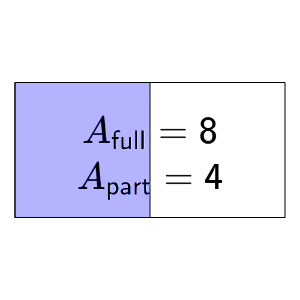This math topic focuses on calculating the fraction of an area filled within a rectangle, given the areas of the total and the filled parts. It forms part of a foundational unit on understanding area and perimeter logic. Students are required to compare given areas and express their relationship as a fraction, enhancing their skills in fractions as well as basic area calculation. This serves as an introductory level exercise to connect visual geometric understanding with numerical fraction representation.
Work on practice problems directly here, or download the printable pdf worksheet to practice offline.
moreArea of a Part Rectangle - Areas to Fraction Worksheet

| Math worksheet on 'Area of a Part Rectangle - Areas to Fraction (Level 1)'. Part of a broader unit on 'Area and Perimeter Logic - Intro' Learn online: app.mobius.academy/math/units/area_and_perimeter_geometry_logic_intro/ |
1

| The full rectangle's area is 8. The area that is filled in is 4. What fraction is filled in? |
a

b

c

d

e

2

| The full rectangle's area is 8. The area that is filled in is 4. What fraction is filled in? |
a

b

c

d

e

3

| The full rectangle's area is 72. The area that is filled in is 36. What fraction is filled in? |
a

b

c

d

4

| The full rectangle's area is 12. The area that is filled in is 6. What fraction is filled in? |
a

b

c

d

e

5

| The full rectangle's area is 24. The area that is filled in is 12. What fraction is filled in? |
a

b

c

d

e

6

| The full rectangle's area is 96. The area that is filled in is 24. What fraction is filled in? |
a

b

c

d

e

7

| The full rectangle's area is 70. The area that is filled in is 35. What fraction is filled in? |
a

b

c

d

e
